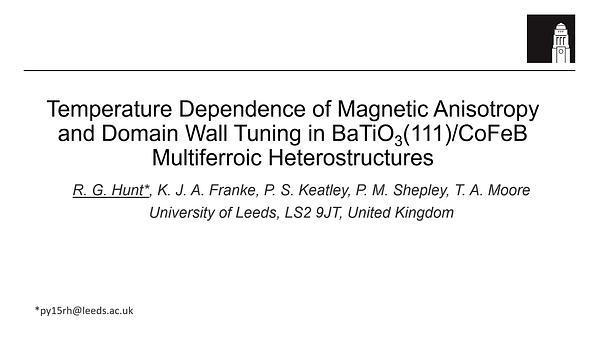
Premium content
Access to this content requires a subscription. You must be a premium user to view this content.

technical paper
Three dimensional Skyrmion Confinement Through Thickness Modulation
Magnetic skyrmions are a topic of extensive research due to their unique magnetic properties and spintronic applications. The primary way to achieve skyrmion dynamics is through electric currents, via STT effects 1. The current can displace a skyrmion, but it usually also imparts an unwanted perpendicular velocity component known as skyrmion Hall effect (SkHE) 2. Finding a way to counter SkHE has recently become a topic of intense research 3, 4. In this work, we show that geometric variations can be used to achieve confinement of skyrmions in both static and dynamic cases.
We have analyzed skyrmions in FeGe structures using finite-element and finite-difference micromagnetic simulations. For the static case, we find that by locally lowering the film thickness in dot-shaped regions (Fig. 1), skyrmions can be "captured" at geometrically defined sites 5. In this way, skyrmions can be stabilized at positions such as square lattices, which otherwise do not occur in usual non-centrosymmetric ferromagnets.
For the dynamic case, we consider a novel "H"-shaped racetrack geometry (Fig. 2). In the presence of a current along the track length, the simulations confirm that the barrier counters the SkHE while allowing skyrmion propagation along the geometrically defined path. We further analyze its trajectories and velocities as a function of current density and compare the numerical results with Thiele's equation 6. Our study confirms that the numerically obtained skyrmion velocities are in accordance with Thiele's equation.
In summary, we present a way to confine three-dimensional skyrmions by exploiting the dependence of skyrmion energy on the film thickness. This can prove valuable in the study of exotic configurations such as a rectangular skyrmion lattice. It may also prove relevant to countering the SkHE in skyrmion-based racetrack devices.
This work was financially supported by initiative of excellence IDEX-Unistra (ANR-10-IDEX-0002-02) and the EPSRC Program grant on Skyrmionics (EP/N032128/1).
References
1 J. Sampaio et al., Nat. Nanotechnol., 8, 839 (2013).
2 I. Purnama et al., Sci. Rep., 5, 10620 (2015).
3 W. Legrand et al., Nat. Mater., 19, 34 (2020).
4 B. Göbel et al., Phys. Rev. B, 99, 020405 (2019).
5 S. A. Pathak & R. Hertel, Magnetochemistry, 7, 26 (2021).
6 J. Iwasaki et al., Nat. Nanotechnol., 8, 742 (2013).

Fig. 1 Geometrically constrained skyrmions in FeGe platelets with circular pockets.

Fig. 2 Snapshots of the skyrmion dynamics in an H-shaped racetrack geometry.

